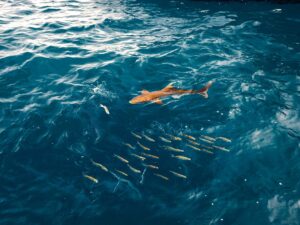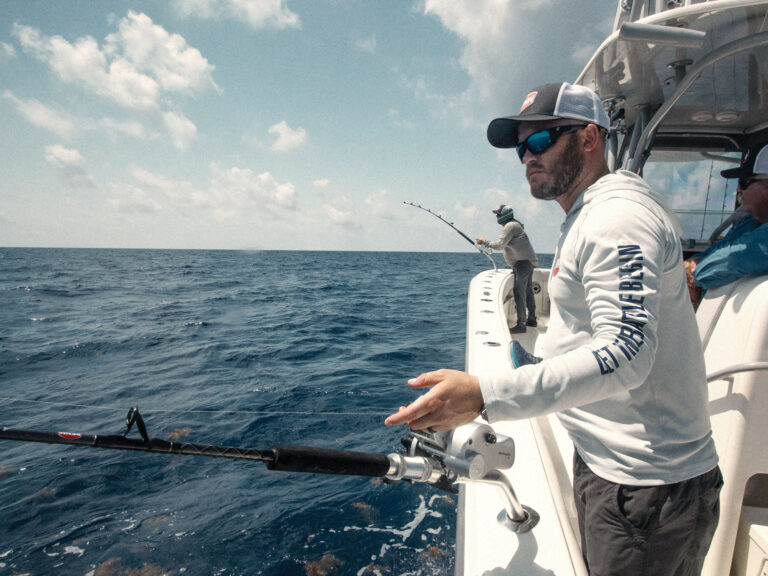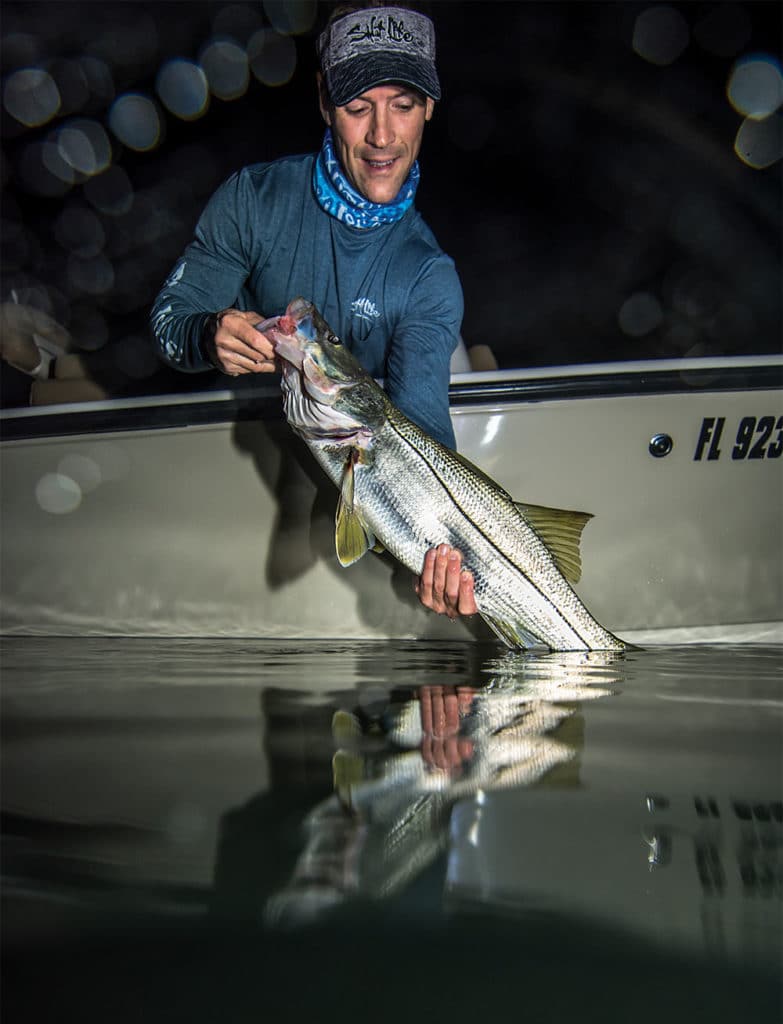
Capt. Gavet Tuttle approached the bridge span from the ocean side and said, “Drop ’em!” Carl Grassi and I fed back a pair of deep-diving plugs and hoped our pass under the bridge would yield a snook.
We didn’t wait long. My plug stopped under the bridge, the rod bent deeply. For a split second, I feared I’d snagged bottom, but then the bottom raced back toward the fenders. Tuttle maintained speed to pull the fish away from the bridge. Safely beyond, I eased the pressure and enjoyed a fight with what felt like a brute of a snook. Minutes later, Tuttle lifted a 20-pounder out of Biscayne Bay, amid Cheshire cat like grins and plenty of cheering. Talk about a first-round knockout!
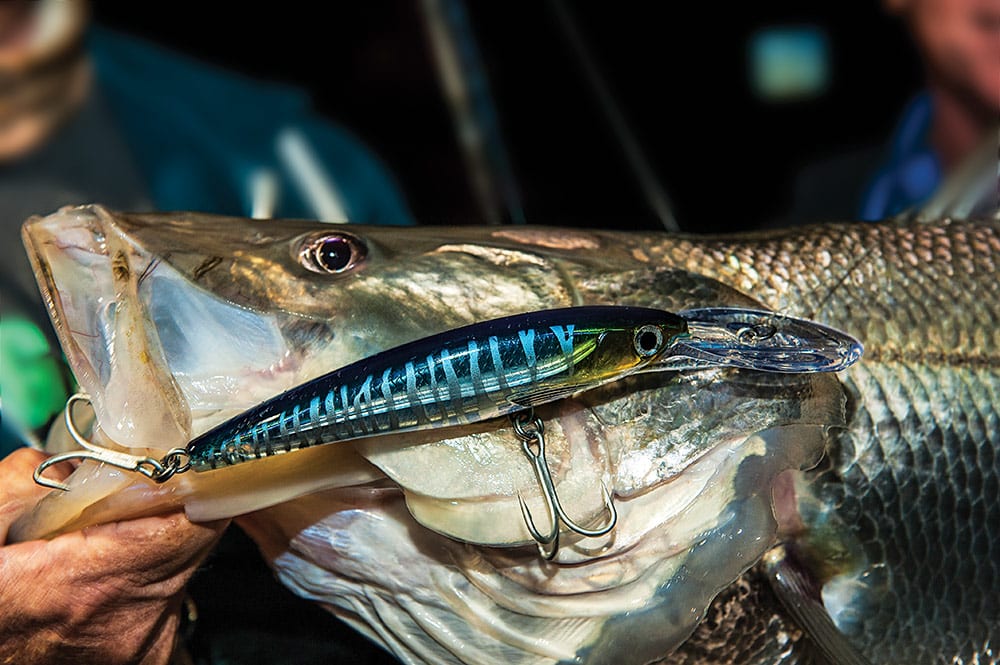
Miami Bites
Tuttle, Grassi, David Cartee and I had convened midafternoon at Haulover Marina to live-bait and troll for snook into the evening. By 9 p.m. we’d released six snook, several big jack crevalle, mangrove snapper, black drum and a shark. That’s how it goes around here.
This two-pronged approach is especially deadly during summer, when snook spawn around Haulover, Government, Norris and Bear cuts. The beauty of snook fishing in the 305 is the next cast might yield a 5-pounder or a 25-pounder.
Read Next: Fishing Around and Under Bridges
Tuttle fishes from Dumfoundling Bay in north Miami-Dade County down south through Key Biscayne.
“Miami snook fishing can be exceptional,” says Tuttle. “Many times my clients have enjoyed 20-plus snook days, and my best day was 52 snook. Contrary to what many people believe, you don’t have to fish at night, if you don’t wish to.”
Our plan was to pitch live baits around Biscayne Bay docks, bridges and inlet jetties during the late afternoon until the tide started out, then troll swimming plugs through the outgoing tide, which would occur at dark.
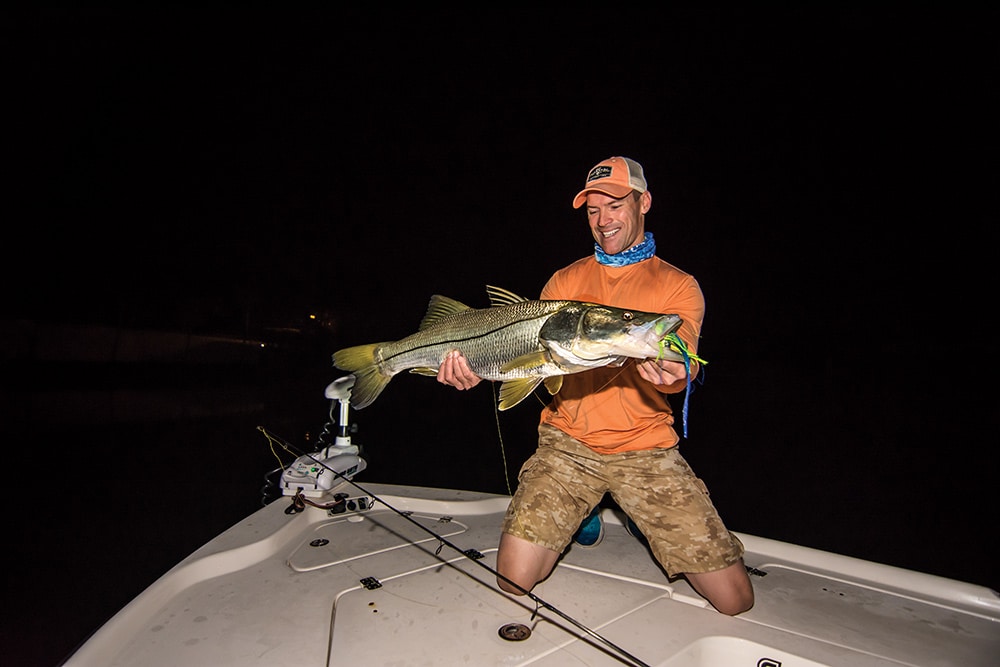
Jukin’ at the Jetties
Tuttle keeps things light. Along the Haulover jetties, we pitched ¼- and ½-ounce jig heads tipped with a live shrimp, pilchard, mojarra or pinfish. Our Penn Slammer III 4500 reels were spooled with 20-pound-test Sufix 832 braid in Coastal Camo. For day fishing, Tuttle prefers 3 feet of 20-pound fluoro leader for snook that see a lot of fishing pressure.
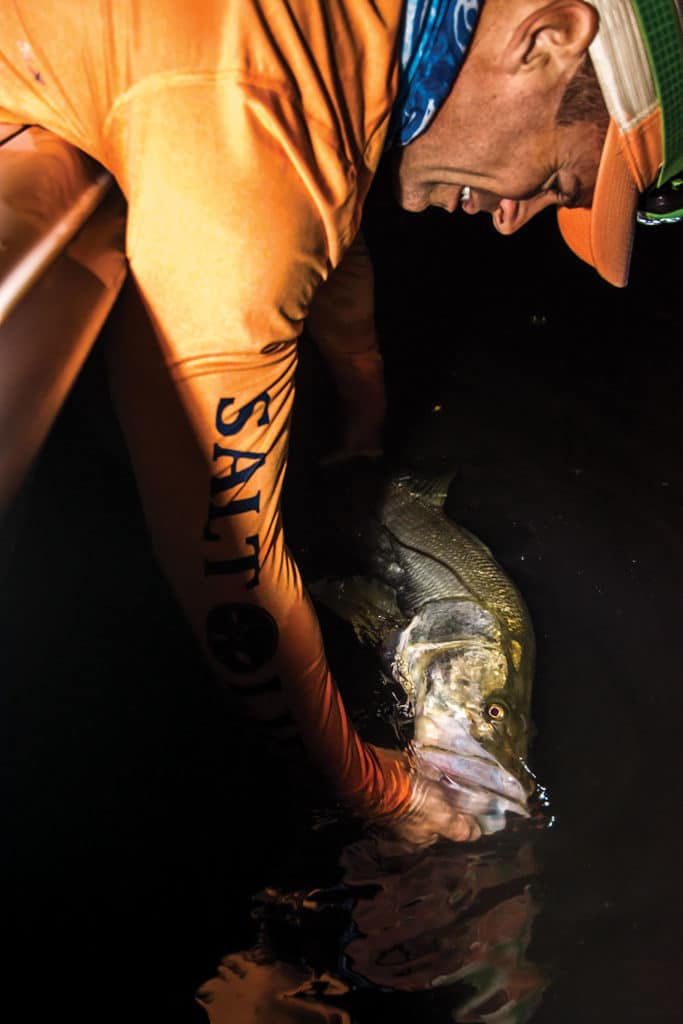
We cast over the shallower belt of submerged jetty rocks, retrieved to the edge, and let the baits settle to the bottom. Along the jetties, it’s a matter of locating where the snook are stacked up, often deep holes and troughs around jetties and within inlets. As a reminder of how snook fishing in Miami goes down, Grassi played out our first snook in the agitated wakes from passing boats.
In inlets, snook generally gather close to jetty points during outgoing tides. These structures and any bottom depressions break the flow, and the back eddies provide prime ambush points. During incoming tides, snook congregate along the inside jetties, usually around pronounced nooks and crannies and bottom depressions.
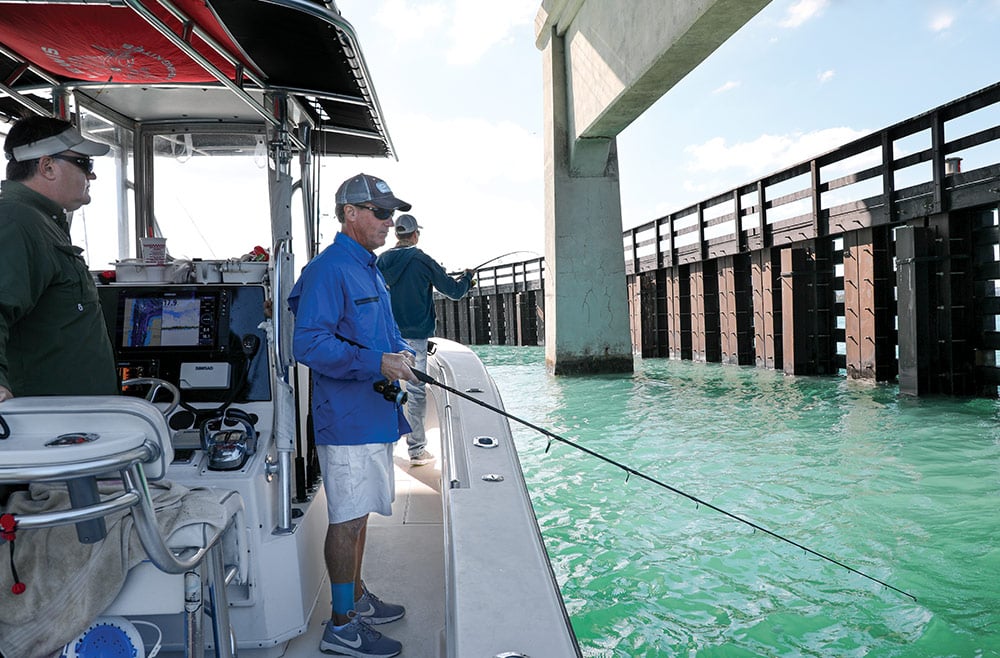
Bridge Wars
Tuttle claims snooking around bridges on a slack tide can be productive, but the fish are widely scattered then. “They move around a bunch,” he says. “The sonar may mark a few along one section of a fender, but they won’t remain there long. When the tide gets going, that’s when they’ll gather in their special haunts.”
Read Next: Fishing Hard Edges
He concentrates his efforts in a 5-foot belt around a bridge, along fenders, pilings or cement bases. He casts tight to the structure and allows the bait to sink and sweep along the bottom, carried by the current. Once his bait drifts beyond that belt, it’s retrieved and recast back uptide within that same zone. As the tide picks up, the snook ambush spots become better defined. Water striking a bridge stanchion creates a slower pocket on both the front and back side. Both pockets offer holding water, where fish expend less energy out of the force of the current. The down-current side tends to be more productive during extreme water flow.
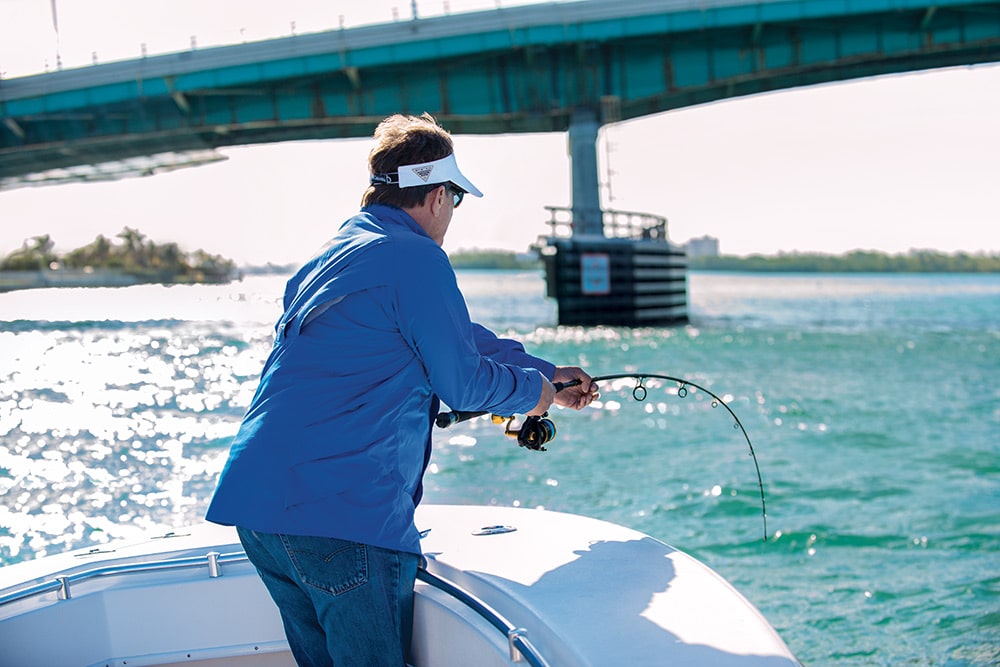
We picked off a couple more snook in this manner, missed a few more, and also caught several snapper. At one point, we eased into casting range of the uptide point of a bridge fender, where a pronounced rip deflected around it and formed an eddy.
My jig landed behind the fender at the edge of the eddy, and within seconds, I hooked a fish that took us from the uptide side to the down-current side away from the bridge. It was a big jack crevalle, an exciting diversion on light spinning tackle.
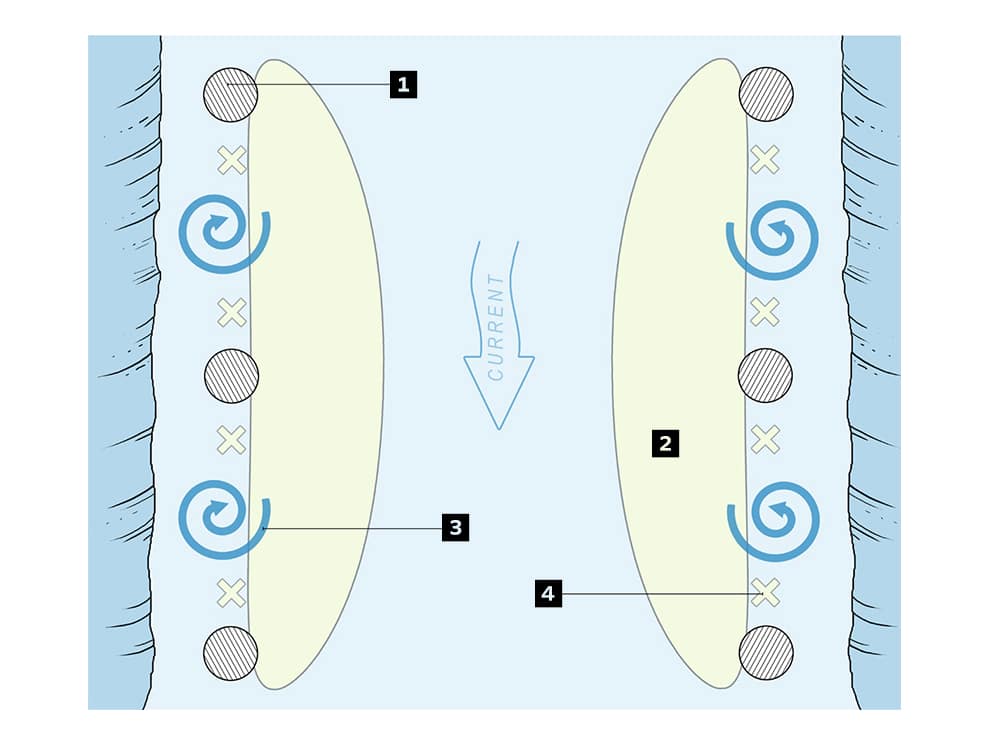
Other Bridge Target Zones
[2] Target area (5-foot zone)
[3] Eddy
[4] Ambush point Steve Sanford
After setting a hook on bridge snook, Tuttle applies moderate pressure and pulls the rod tip toward open water. “It sort of confuses them into following the light pressure toward the direction of pull,” he says. “Once it’s away from the structure, then get on the fish with more pressure. When you try to horse a snook away from the bridge on the hook-set, they react by running toward the bridge.”
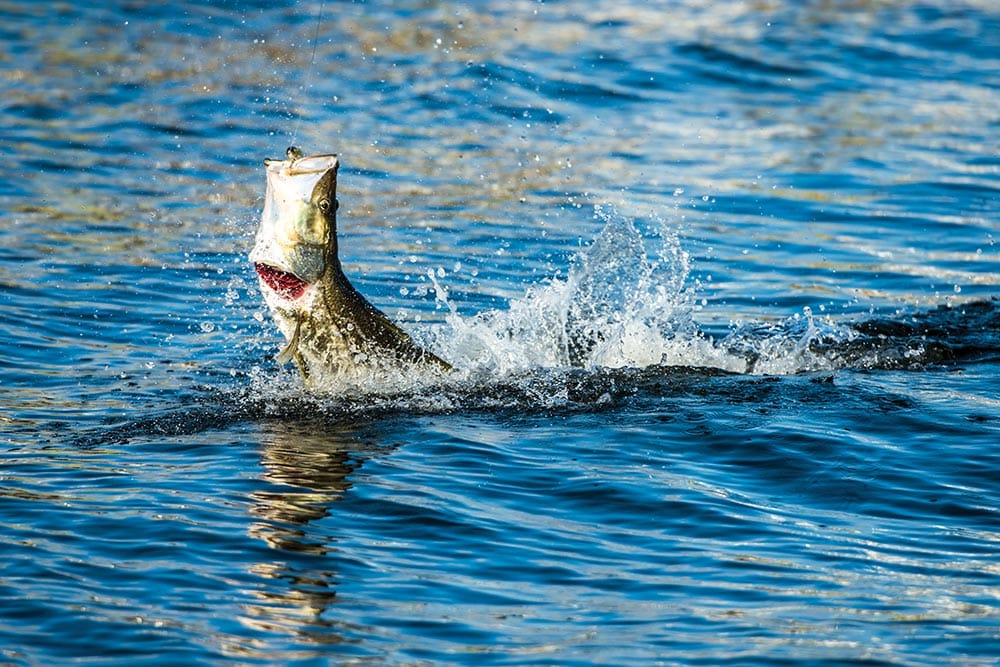
Pull a Plug
Growing up in Miami, my standard strategy for snook was plug trolling. It’s still one of the best ways to catch them — big ones too.
With the tide running hard, we switched to 30-class lever-drag reels on 5-foot-8-inch Penn Bluewater Carnage II rods rated for 80- to 200-pound line with plenty of backbone — perfect for pulling big plugs and muscling fish from structure. We lined up 50-pound braid with a snap swivel clipped to 6 feet of 60-pound fluorocarbon leader and a Rapala X-Rap Magnum deep-diving plug.
I chose the new Mag 30-foot deep diver; Grassi tied on a Mag 15. The best approach is to bring the boat to a slow-to-moderate trolling speed before approaching a bridge, let out line until the plug bumps bottom, then reel it up a few turns so it runs just above the snags. Maintain a low line angle by holding the rod tip near the surface.
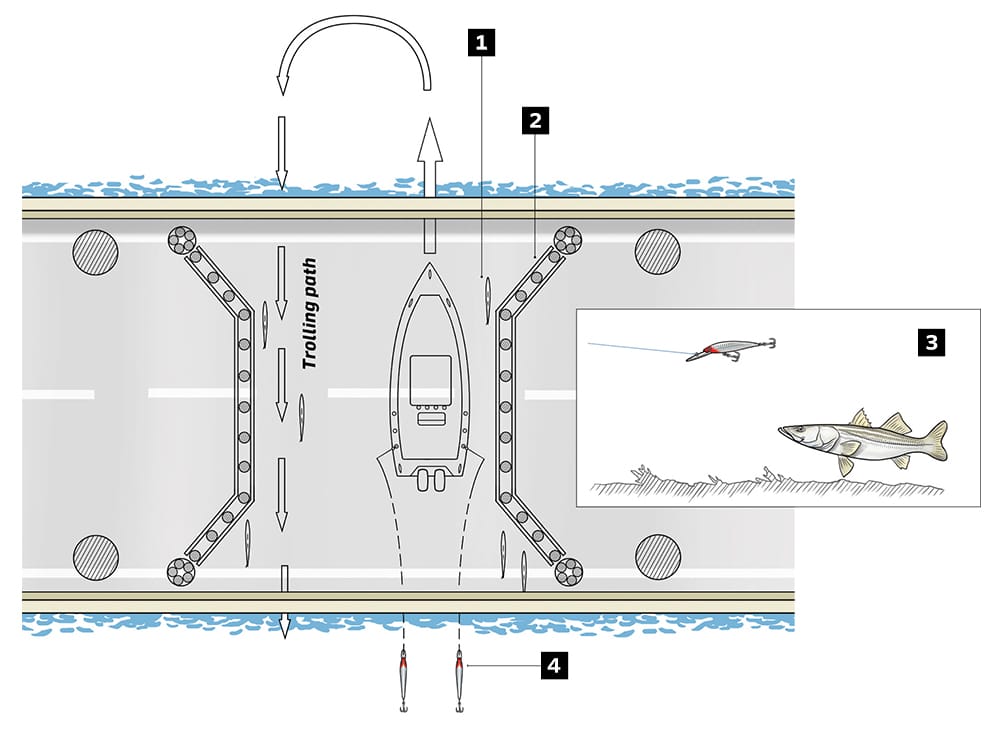
Other Bridge Target Zones
[2] Bridge fenders
[3] Snook often attack plugs trolled nearby
[4] Trolled diving plugs Steve Sanford
Troll through bridge spans and along shadow lines of long east-to-west Biscayne Bay bridges, both on up- and down-current sides. The Rapala Mag 20 and 30, or similar plug types, are ideal in the 13- to 18-foot depths of Haulover Inlet, whereas the deeper-running Mag 40 is best-suited for 50-foot Government Cut. For shallower cuts and shadow-line trolling along bay bridges, the Mag 10 and 15 get down near the bottom.
Pass one resulted in my beautiful snook. On the next pass, Grassi scored one uptide of a fender, then jumped one off on the third pass but redeemed himself by boating a fish on the fourth pass.
Read Next: Inshore Grouper Fishing Tactics
Miami offers superb snooking year-round, but the action really heats up in summer. Whether pitching live baits to docks and bridges during the day, to dock lights and bridge structure at night, or trolling swimming plugs through inlets and along bridges, you’ll be hard-pressed not to find fish.
Top-Tier Miami Snook Guides
Capt. Gavet Tuttle; backformorefishingcharters.com; 954-448-1211
Capt. Alan Sherman; getemsportfishing.com; 786-436-2064
Capt. Bouncer Smith; captbouncer.com; 305-439-2475




